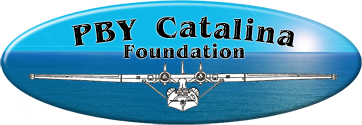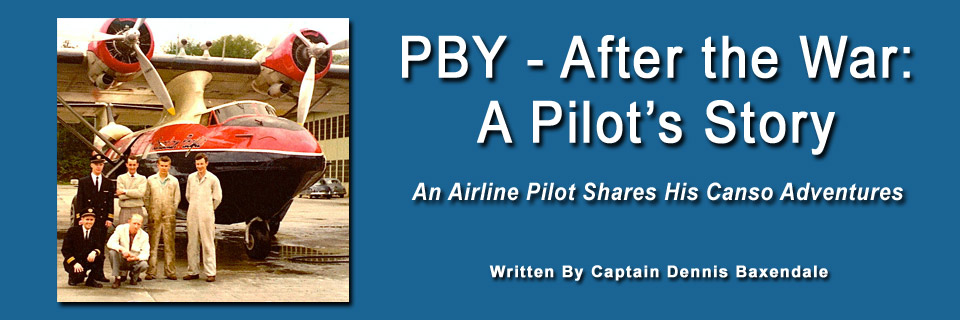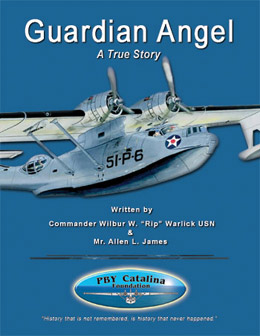A Pilot's Story
Chapter One - Page 2
I was qualified on the PBY on the 19th of April 1959 and started my six-month apprenticeship. I didn’t realize it at the time but Prince Rupert was having its nicest summer in years. This meant that, with no rain or wind, I wasn’t learning as much as I should have been. The training Captain “Kenny Kirk” had, unfortunately for me, school-aged children which he wished to enroll in school in Vancouver, BC in the fall. So he waved goodbye on August 31st 1958 in Sandspit. Now I was in charge??
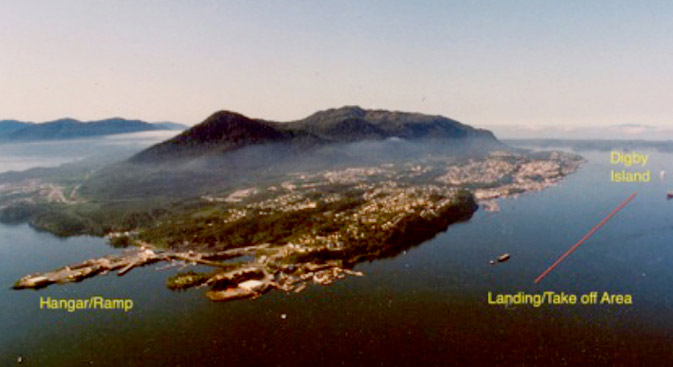 As I returned to Prince Rupert, the wind had picked up and was blowing across the harbor. Being a smart young Captain, I elected to land into the wind, in the strait by Digby Island, away from the crash boat, which always stood by for our return. We had never landed out there and I was about to learn why. Not being familiar with the ocean beyond the confines of the harbor, I didn’t know too much about ocean swells as I was from Alberta. As I lowered the Canso onto the surface, the water slowly disappeared on me only to rise up further along in front of me. I managed to my relief to get it on the water safely but now was miles from A. the crash boat and B. the ramp. Well, being a smart young Captain, I just got it on the ‘step’ and hurried home. First of all with that 15- 20-knot tailwind, it was a “challenge” to turn around. Finally I managed it, whew. Off we went. Oh! Oh! With the strong tailwind I’d lost aileron control and was having trouble keeping the floats out of the water, increase taxi speed was the only answer. Now we were really rolling along nearly back to take off speed. Hitting the tops of the swells. Finally turned the corner and was able to slow down. Never did that again.
As I returned to Prince Rupert, the wind had picked up and was blowing across the harbor. Being a smart young Captain, I elected to land into the wind, in the strait by Digby Island, away from the crash boat, which always stood by for our return. We had never landed out there and I was about to learn why. Not being familiar with the ocean beyond the confines of the harbor, I didn’t know too much about ocean swells as I was from Alberta. As I lowered the Canso onto the surface, the water slowly disappeared on me only to rise up further along in front of me. I managed to my relief to get it on the water safely but now was miles from A. the crash boat and B. the ramp. Well, being a smart young Captain, I just got it on the ‘step’ and hurried home. First of all with that 15- 20-knot tailwind, it was a “challenge” to turn around. Finally I managed it, whew. Off we went. Oh! Oh! With the strong tailwind I’d lost aileron control and was having trouble keeping the floats out of the water, increase taxi speed was the only answer. Now we were really rolling along nearly back to take off speed. Hitting the tops of the swells. Finally turned the corner and was able to slow down. Never did that again.
Prince Rupert was a small base with an engineer, by the name of George Sporne (English and very capable), two assistants, a dispatcher, agent and his assistant plus, of course, a first officer and stewardess.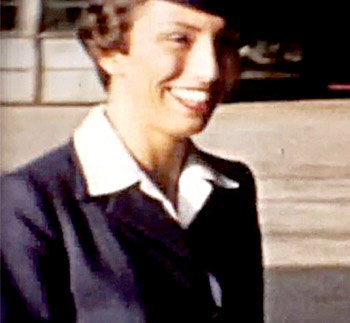 The tricky thing with the stewardesses was that Prince Rupert was considered one of the most undesirable places to be, so they were generally the most junior and were assigned, like it or not. Their sentence was for three months. We once had someone who enjoyed the attention from the large male population and actually requested a further three months.
The tricky thing with the stewardesses was that Prince Rupert was considered one of the most undesirable places to be, so they were generally the most junior and were assigned, like it or not. Their sentence was for three months. We once had someone who enjoyed the attention from the large male population and actually requested a further three months.
My initial First Officer (F/O) was Robert Allison and the stewardess Pat Cooper. The F/Os also were the lowest on the seniority list. I had three while I was there. As I mentioned, Prince Rupert is on the storm track for the North Pacific and has the reputation for rain and wind. The difficulty was that the harbor was oriented such that the wind came over the hills behind Prince Rupert and at right angles to the landing area. The radio beacon was located on Digby Island where the new land airport is today. The procedure was to let down over the beacon and if the visibility and wind were within limits, then continue on.
